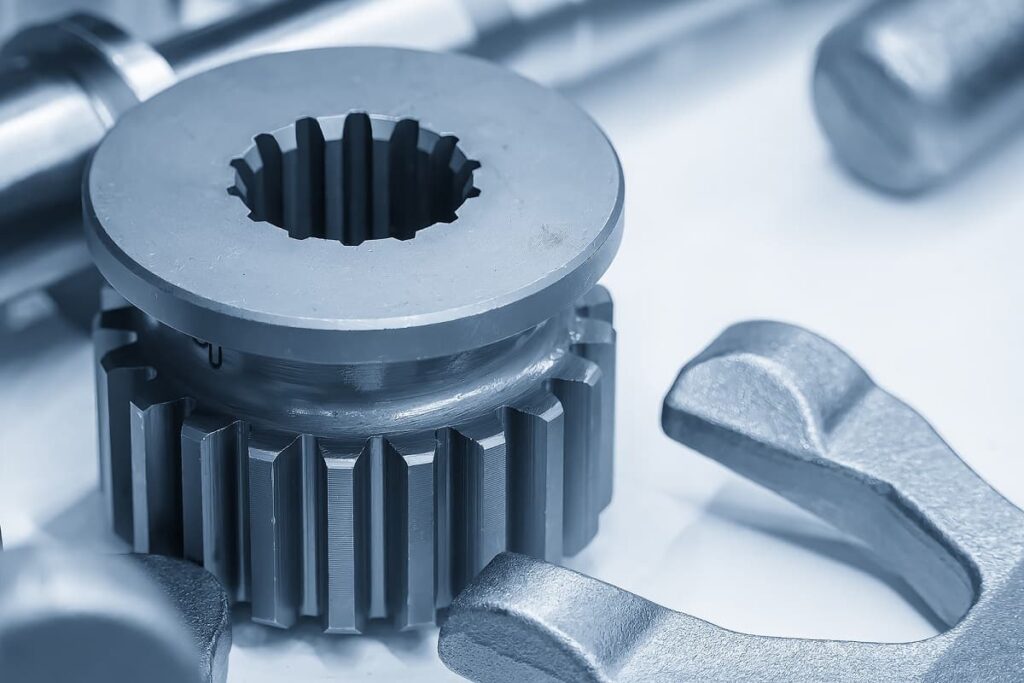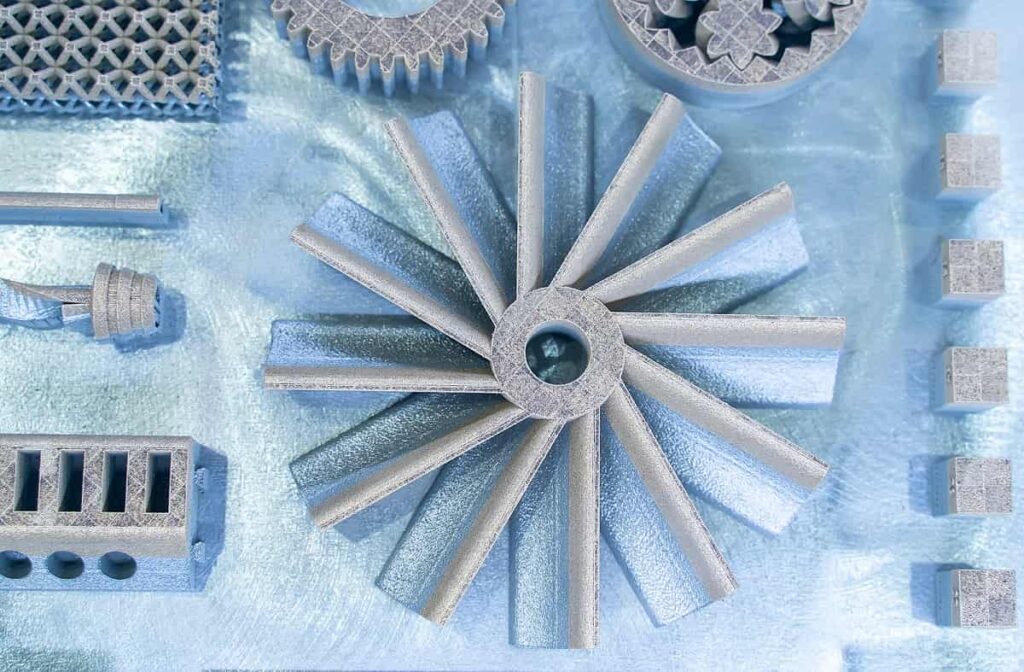7 of the Most Funded 3D Printing Startups in 2017
Table of contents

From customized sneakers to orbital rockets, its seems that 3D printing is making a comeback thanks to a new wave of innovation. A $200 million mega-round in late December helped 2017 finish as the best year ever for venture-capital-backed startups in terms of funding. One of the industry’s biggest boosters, GE, believes 3D printing will disrupt manufacturing to the tune of $75 billion per year. That would suggest that the $1 billion in private investments since 2013 (according to CB Insights) might only be the start of something big.

The graph above was presented at a CB Insights webinar on Dec. 12. About a week later, 3D printing startup Carbon3D announced a $200 million Series D, which means total private dollars should be somewhere north of $600 million in 2017 when the 3D dust settles. Below we list the top-seven funded startups from 2017. The top two spots are unchanged from our previous roundup for 2016, when total funding for all five 3D printing companies was only $215 million.
Outpacing the Competition
The $200 million that Silicon Valley startup Carbon (formerly known as Carbon3D) took in last month will bring total funding to $422 million (the first installment of the round was a reported $143 million). The new infusion of cash propelled Carbon, founded in 2013, to a $1.7 billion valuation, making it the last company to join the Unicorn Club in 2017. Investors included top VC firms like Sequoia, which has participated in previous funding rounds, along with Fidelity and GE, which seems to show up on just about every investor list in 3D printing. The new greenbacks will help the company expand into areas like consumer electronics (Nikon has been an investor), and medical/dental, TechCrunch reported. Through its investment arm, Hydra Ventures (when not battling Captain America for world domination), Adidas also joined the Series D. The inclusion of Adidas is not surprising, given one of the latest trends in 3D printing is footwear:
Mass production of Adidas’ Futurecraft 4D line of 3D printed shoes is expected to begin this year. The company employs something called Digital Light Synthesis, which is 10 times faster than traditional additive manufacturing where a product is built layer by layer from the top down. Carbon prints continuously from the bottom up with a more flexible material that is ideal for pounding the pavement in overpriced sneakers.
Speed Metal


The Production System builds metal parts in a matter of minutes instead of hours, according to the company, using a metal injection molding powder.
Traveling Light

The company says the latest infusion of cash will help it expand globally, particularly into the Chinese electric vehicle market, where a lighter but stronger chassis would likely help EV manufacturers boost their miles per charge. The focus on Asian markets reflects the company’s investor portfolio, which includes O Luxe Holdings and Horizons Ventures, both out of Hong Kong, as well as Shanghai Alliance Investment. The Series B round came with a $40 million option, yet to be exercised last we heard.
Profitable Printing
A $30 million Series C in November to Markforged out of Cambridge, Massachusetts, brought the startup’s total funding to $54.8 million, more than double its previous warchest. Investors include Porsche, Microsoft, and Siemens. Founded in 2013, the company focuses on carbon fiber and metal 3D printing, offering a range of industrial and desktop 3D printers for making parts at a fraction of machined components:

TechCrunch reported that the company is profitable, while “scaling at 300 percent year-over-year” (we’re not sure what that means but it sounds promising).
Details are in the Software
Founded in 2013, Berlin-based 3YOURMIND took in $12 million for a total of $13 million in investments for its 3D printing software solutions. As we discussed previously, software is required to prepare a file for 3D printing. While customers can rely on the default programs that usually come with their hardware, companies like 3YOURMIND offer solutions that optimize 3D models so that the final product is lighter and stronger than it would be otherwise. Additionally, its platform can determine, for example, which parts are ideally suited for 3D printing. Significant customers include Siemens.
Back to the Desktop
Founded in 2014, San Diego-based UNIZ Technology raised a $6.8 million Series A in October. It’s also been active on the crowdfunding side, using Kickstarter as a way to promote the latest products in its 3D desktop printing line while picking up some extra cash along the way. It debuted a number of its new models at this month’s Consumer Electronics Show in Vegas featuring a new printing technology called uni-directional peeling, which minimizes the peel time of the conventional stereolithographic layering process. One of the primary uses of the technology is prototyping. The company says its printers are particularly useful in areas such as medicine, including clinical and educational settings. For example, 3D models of bones can be reconstructed using imagery from an MRI.
Ready to Scale
Founded in 2011, Impossible Objects out of Illinois completed a $6.4 million Series A last October, bringing total funding to $9.2 million. The company employs what it calls composite-based additive manufacturing (CBAM) technology, marking parts from fiber-reinforced composites, such as carbon, Kevlar and glass fiber fabrics, which are bonded with thermoplastic matrix materials such as nylon or polyethylene:

Impossible Objects says its products are as light as aluminum but much stronger, and can be produced as quickly as plastic components for volume manufacturing. The company expects to release commercial units of its Model One this year.
Update 05/21/2019: Impossible Objects has raised $4.1 million in new funding to help the startup grow its business and forge new partnerships. This brings the company’s total funding to $13.3 million to date.
Conclusion
Are we entering a 3D printing Renaissance? We’ve talked before about the Gartner Hype Cycle, which says that a technology will go through a phase of unrealistic expectations (hype) before it goes crashing down, and then re-emerges with more realistic expectations and better business plans. We’re starting to see some positive news from public companies like Stratasys (NASDAQ:SSYS) after the 2014 crash in 3D printing stocks. Obviously, if companies like Carbon3D and Desktop Metal can help make 3D printing cheaper AND faster than traditional manufacturing, then we may finally enter the Slope of Enlightenment in the Gartner Hype Cycle. Next stop: Nirvana and an IPO?
Sign up to our newsletter to get more of our great research delivered straight to your inbox!
Nanalyze Weekly includes useful insights written by our team of underpaid MBAs, research on new disruptive technology stocks flying under the radar, and summaries of our recent research. Always 100% free.















